Family : Chaetodontidae

Text © Giuseppe Mazza

English translation by Mario Beltramini
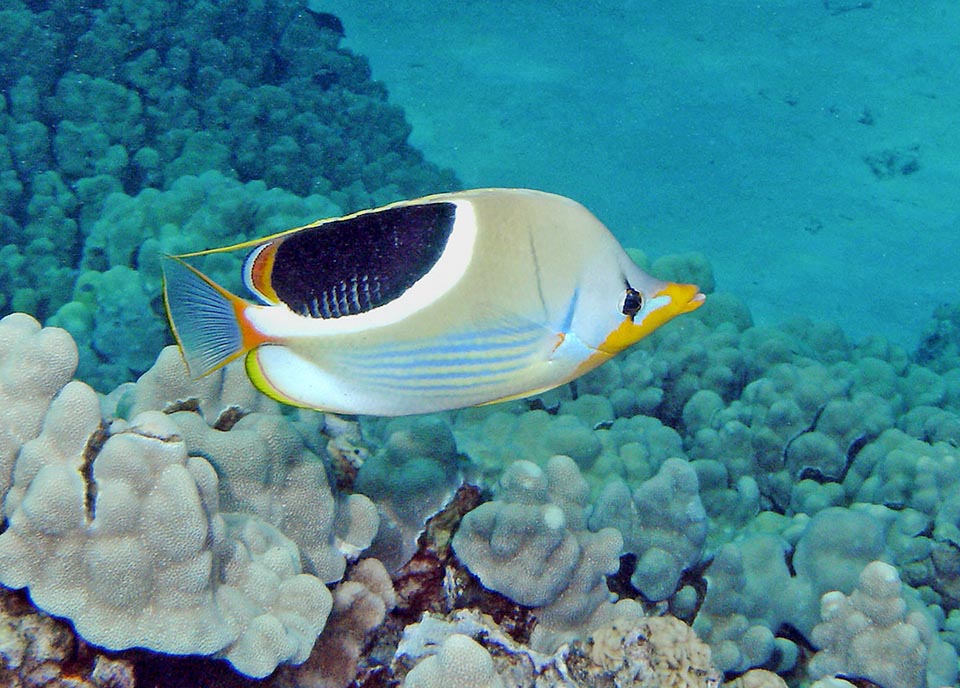
The Saddled butterflyfish (Chaetodon ephippium) is present in the Pacific Ocean tropical waters and in the nearby ones of the Indian, starting from India and Sri Lanka © Barry Fackler
The Saddle butterflyfish (Chaetodon ephippium Bloch & Schneider, 1801), belongs to the class of the Actinopterygii, the ray-finned fishes, to the order of the Perciformes and to the colourful family of Chaetodontidae.
The name of the genus Chaetodon comes from the Greek “khaite”, hair, and “odous”, tooth, due to the bristle-shaped teeth.
The name of the species ephippium comes from the Greek “efippion” = saddle, due to the saddle-shaped design on the back.
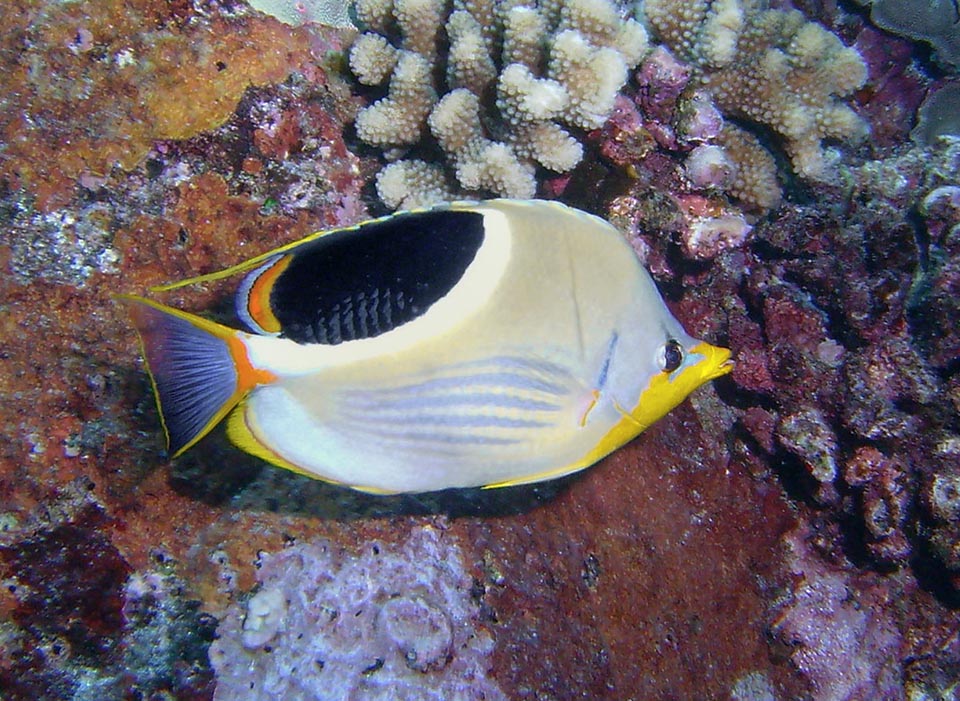
It lives in shallow waters, not beyond 30 m, and owes its vulgar name to the showy black spot shaped like a horse saddle present on the back © Barry Fackler
Zoogeography
The Saddle butterflyfish has a very vast distribution. It lives mainly in the tropical waters of the Pacific Ocean, but also, in a lesser extent, in the Indian Ocean.
It is at home in Indonesia, Australia, New Guinea, Micronesia, New Caledonia, Philippines, Taiwan, China, up to southern Japan, and, eastwards, Vanuatu, Fiji, Tonga, Samoa, up to Hawaii islands. We then find it, in the Indian Ocean, in Malaysia and in Sri Lanka.
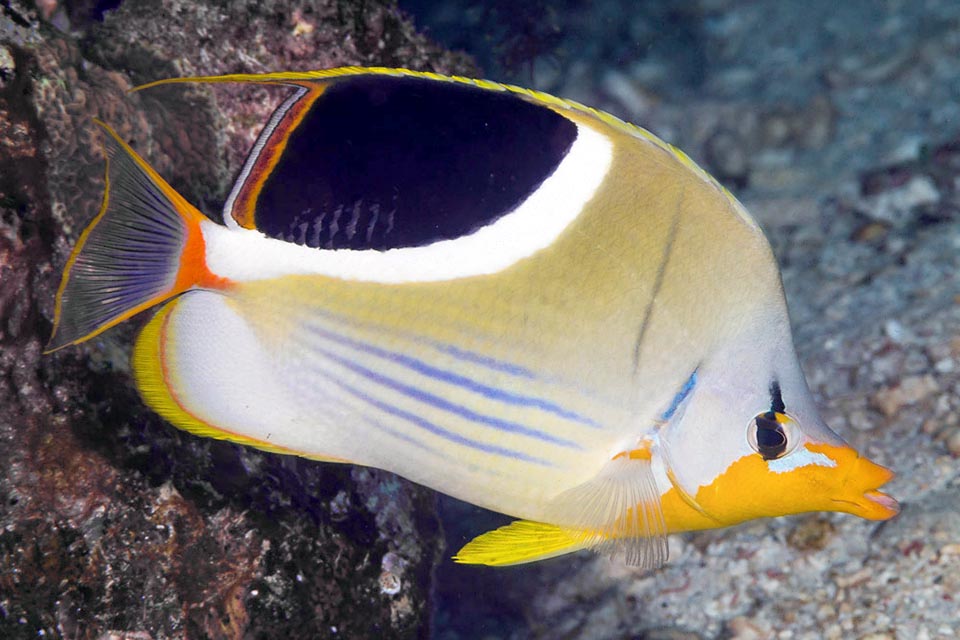
On the sides we note some bluish parallel lines, and the yellow orange snout is elongated for preying in the microfauna crevices © François Libert
Ecology-Habitat
It visits the sunlit madreporic formations looking for filamentous seaweeds and predates the microfauna up to 30 m of depth.
Morpho-physiology
With even 30 cm of length, it is one of the greatest butterflyfishes. The body is flat, almost squared, apart the head, with a pointed snout for rummaging in the crevices.
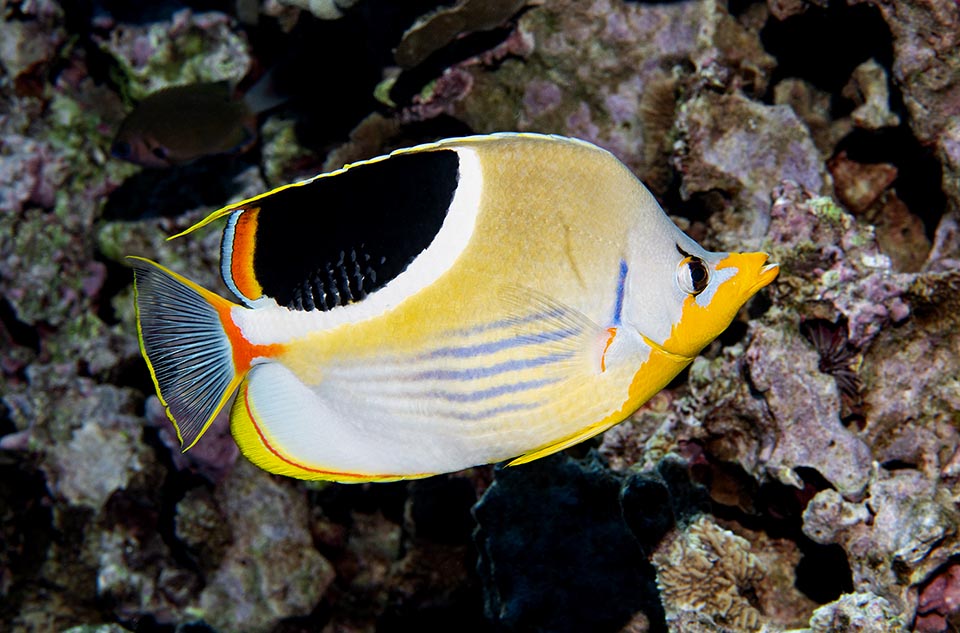
In addition to coral polyps, small crustaceans, polychaetas and fish eggs, the Saddled butterflyfish eats also filamentous algae infesting the reefs © Brian Cole
The dorsal fin, which in the adults has, like the Chaetodon auriga, a filament that can exceed the length of the tail, counts 12-14 spiny rays and 21-25 soft; the anal has 3 spiny rays and 20-23 soft. The ventral and the pectoral fins are unarmed. The caudal is more or less blunt.
The livery is unmistakable due to the huge black dorsal saddle, emphasized, downwards, by a wide white band and on the back by an orange stripe. The rest of the body is grey-yellowish, with about 6 horizontal stripes tending to blue, at times barely visible. The lower part of the head, the ventral fins and the lower margin of the anal one has a nice bright yellow colour.
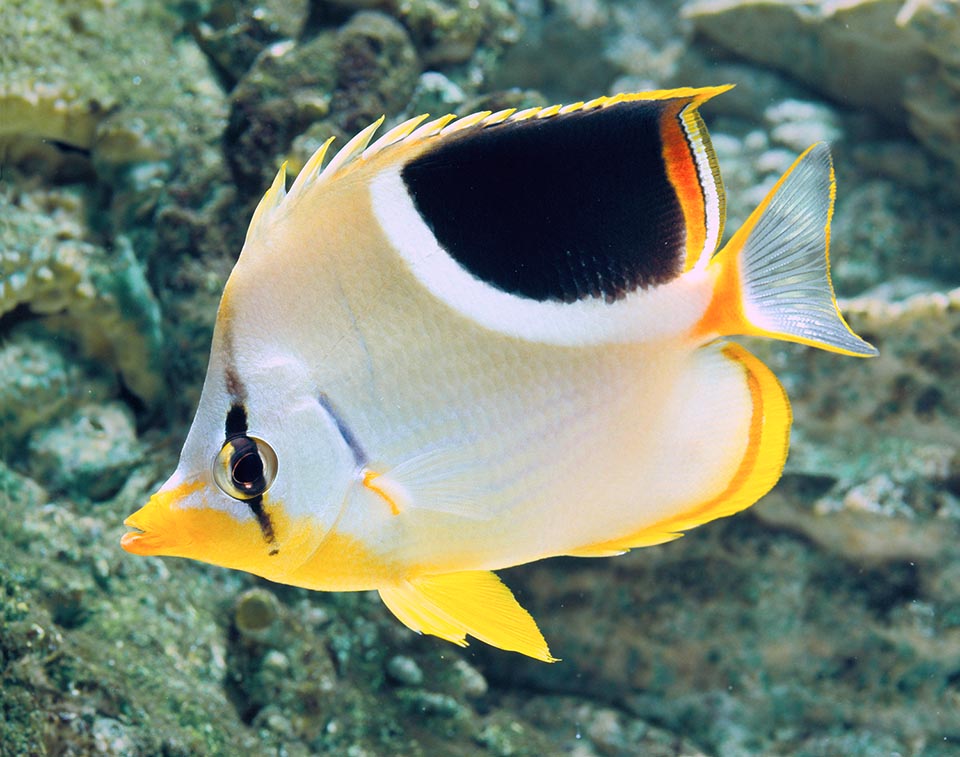
The roundish subadults have a shorter snout, attenuated lateral bands and do not have the showy extension of the dorsal fin © Giuseppe Mazza
Also the tail, translucent, ends in a yellow small border, preceded by an orange peduncle which resumes the colour of the band present on the dorsal and on the anal. The eye is camouflaged by the usual vertical black stripe, which, however, in this species, does not cross the whole body, and after the operculum we see another black trait.
Ethology-Reproductive Biology
The saddle butterflyfish is active day and night. It swims solitary, in pair or in small schools looking for filamentous seaweeds, polyps of coral, small crustaceans, polychaetas and eggs of other fishes.
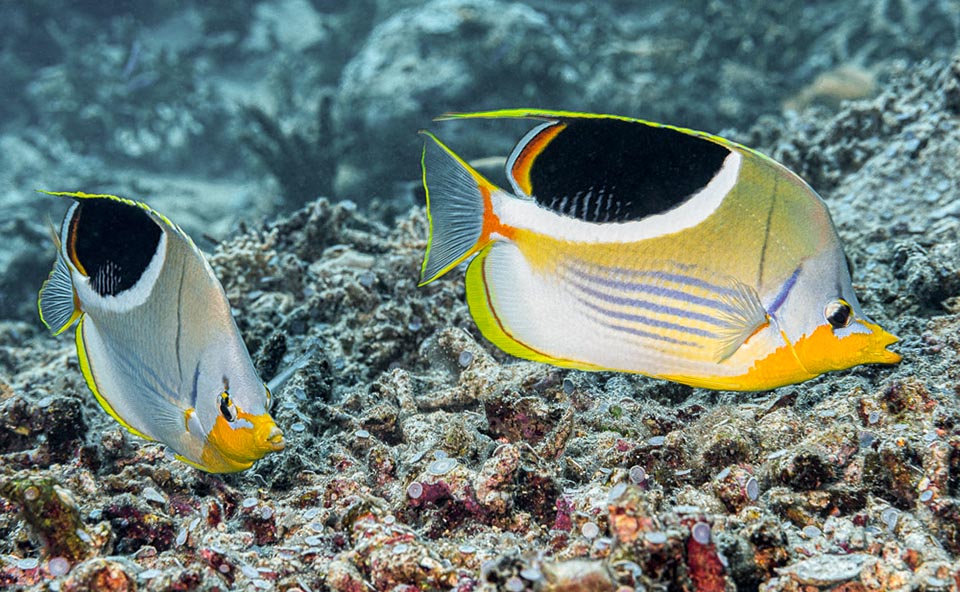
Reproduction doesn’t occur in groups but in pairs who entrust the fecundated eggs to the currents. Resilience is good and it is not an endangered species © François Libert
The reproduction does not take place in group, but in pairs with pelagic eggs.
Even if predated by the aquaria lovers, it has a modest fishing vulnerability index, just 20 on a scale of 100, because anything goes, thus reacting better than other species to the environmental changes, with populations which may double in less than 15 months.
Synonyms
Chaetodon garnoti Lesson, 1831; Chaetodon mulsanti Thiollière, 1857; Chaetodon principalis Cuvier, 1829.
→ For general information about fishes please click here.
